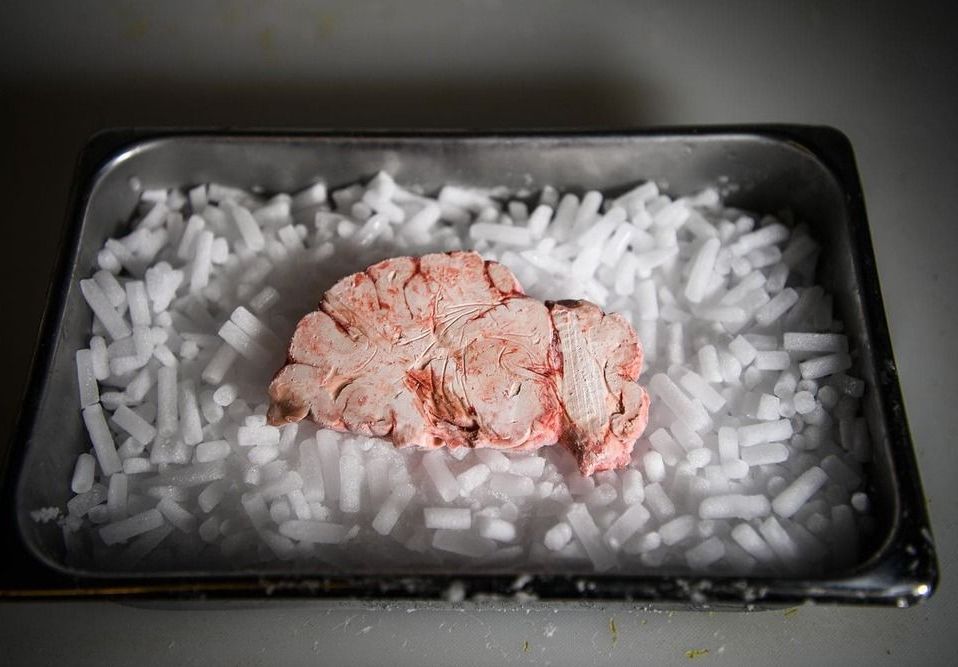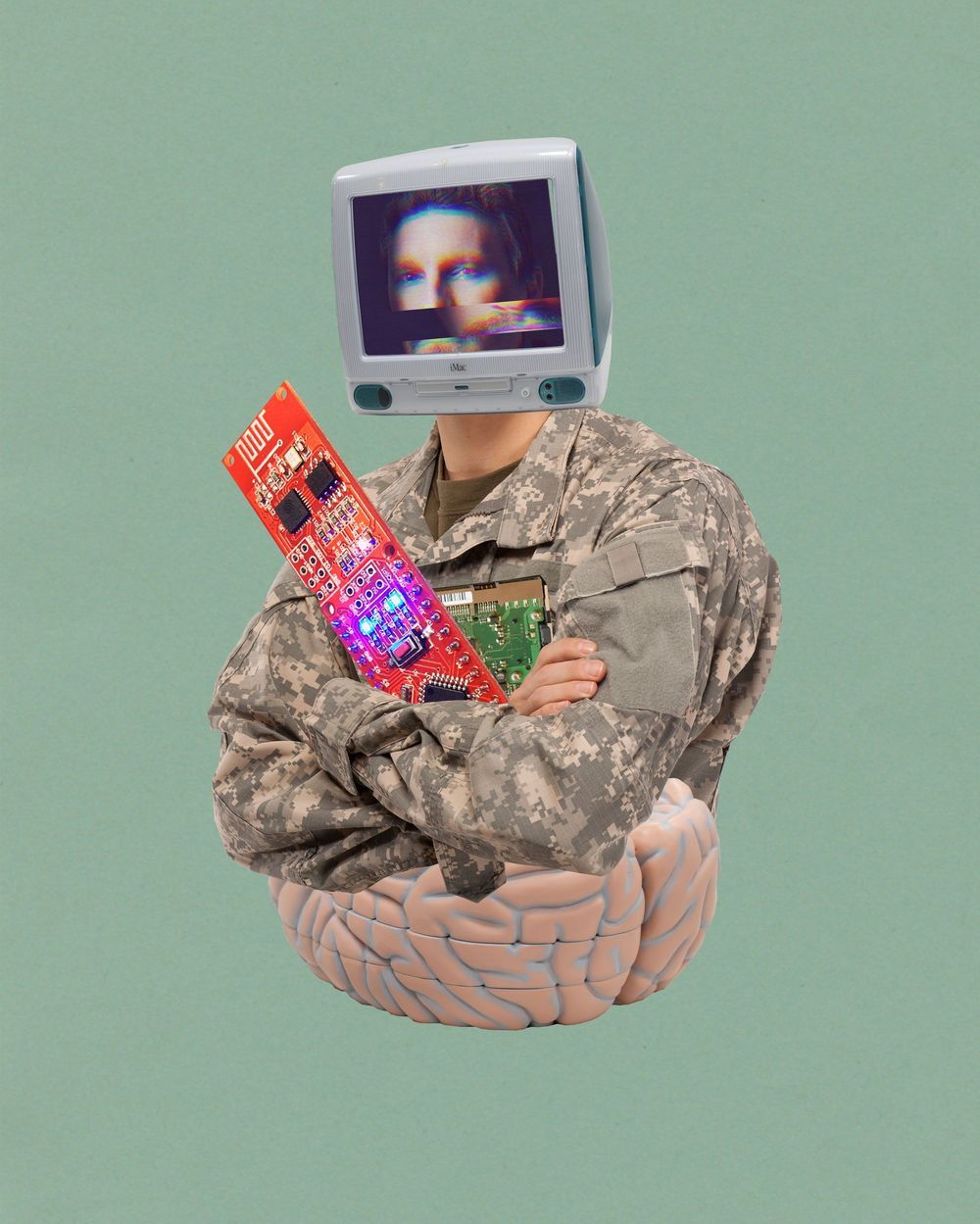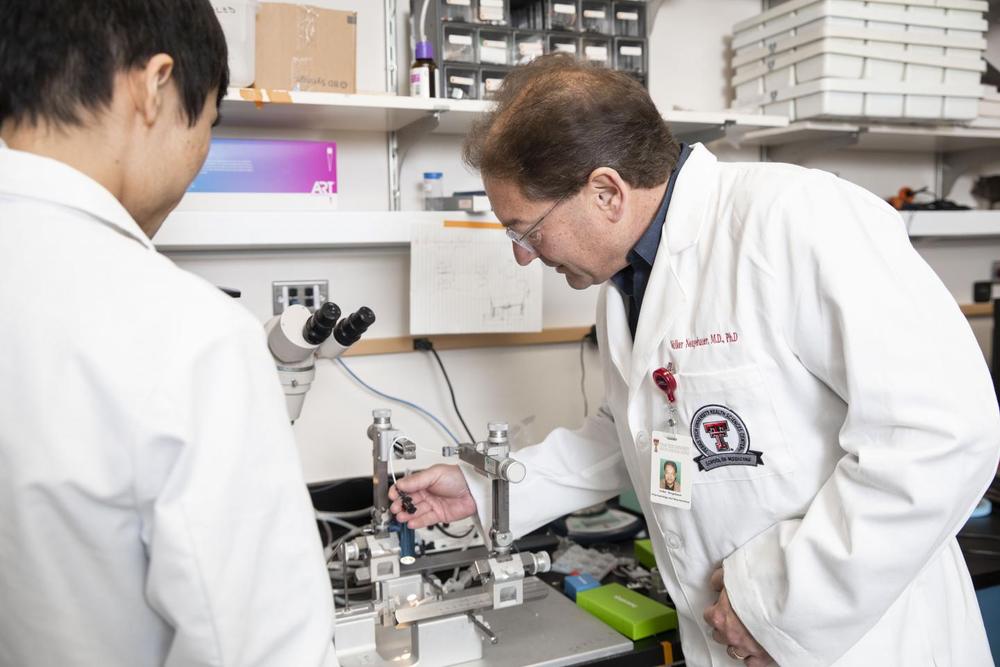More isn’t necessarily better, at least for the excitation of brain cells.



I n August, three graduate students at Carnegie Mellon University were crammed together in a small, windowless basement lab, using a jury-rigged 3D printer frame to zap a slice of mouse brain with electricity.
The brain fragment, cut from the hippocampus, looked like a piece of thinly sliced garlic. It rested on a platform near the center of the contraption. A narrow tube bathed the slice in a solution of salt, glucose, and amino acids. This kept it alive, after a fashion: neurons in the slice continued to fire, allowing the experimenters to gather data. An array of electrodes beneath the slice delivered the electric zaps, while a syringe-like metal probe measured how the neurons reacted. Bright LED lamps illuminated the dish. The setup, to use the lab members’ lingo, was kind of hacky.

US biotechnology company called Bioquark has been given permission to recruit 20 clinically dead patients and attempt to bring their central nervous systems back to life. They hope to eliminate patients’ need to rely on machines by reanimating parts of the upper spinal cord, where the lower brain stem is located, to potentially energize vital body functions like breathing and heartbeats.
Trial participants will have been declared certified dead and kept alive solely through life support machines. “This represents the first trial of its kind and another step towards the eventual reversal of death in our lifetime,” said CEO of Bioquark Inc., Ira Pastor.
The team, who has been granted ethical permission from an Institutional Review Board at the National Institutes of Health in the US and India to begin trials on 20 subjects, is looking to recruit patients for its ReAnima Project as soon as possible.


Existing compound produces pain-relieving effects and relieves anxiety. Past pain research typically has focused upon the spinal cord or the peripheral areas of the nervous system located outside the spinal cord and brain. However, a research team headed by Volker E. Neugebauer, M.D., Ph.D., at the Texas Tech University Health Sciences Center (TTUHSC) School of Medicine recently investigated how some mechanisms in the brain contribute to pain. His study, “Amygdala group II mGluRs Mediate the Inhibitory Effects of Systemic Group II mGluR Activation on Behavior and Spinal Neurons in a Rat Model of Arthritis Pain,” was published recently by the journal Neuropharmacology. Mariacristina Mazzitelli, a TTUHSC research assistant and Ph.D. candidate, is the study’s lead author.
“Our group has been interested in understanding pain mechanisms, and our unique area of expertise is really understanding that changes in the brain contribute to the persistence, intensity and other side effects of pain,” Neugebauer said. “It is not just a sensation that let’s you know where it hurts and how intense the pain feels. It also causes anxiety, impairs quality of life and causes depression. We’re studying the brain because all of those things reside there.”
To better understand what pain-related changes may occur in the brain, and how to normalize those changes, Neugebauer’s study applied an arthritis pain model and focused on the amygdala, which are almond-shaped clusters located deep inside each of the brain’s temporal lobes. The amygdala is part of what is known as the limbic brain, a complex arrangement of nerve cells and networks that control basic survival functions, motivations and emotions like fear and play a central role in disorders like anxiety, addiction and pain.

I am chronically old, but I am not old. I was on dancing with the stars. This is the new way to age. It’s not that old paradigm that says you wrinkle, frail, hunch over, have heart and other illnesses, be in a nursing home. No, there is a new paradigm. I’m the new paradigm. The older I get, the stronger and better my brain gets. I fully expect to be on the Vegas stage when I am 80.
Sync Media Network
SyncMediaNetwork.com
JTIppolito.com
MediaMarketingMgmt.com lw… https://www.youtube.com/watch?v=SaydPEfdWjk


A message to our readers: Have you checked out our NEW on demand video platform called CETV? We created it to combat censorship and support the important journalism we are doing. Visit CETV.one to sign up for a free 7 day trial here. Thank you for your support!
Recently, an 82-year-old woman who suffered from dementia, who couldn’t recognize her own son has miraculously got her memory back after changing her diet.
When his mother’s condition became so severe that for her own safety she had to be kept in the hospital, Mark Hatzer almost came to terms with losing another parent.

Customers can trim branches for $35 a pound or cut down the whole plant (like a Christmas tree) for $25 a pound. In a video of the field’s grand opening, a customer buys a 15-pound plant for almost $400.
That may sound pricey, but considering you’re lucky to find most refined hemp products for $25 an ounce, it’s a bargain, according to the farm’s customers, who tell the local newspaper, they’ll be using the plant’s flowers to make CBD oil, lotions and tinctures for pain, anxiety, depression and insomnia.
Instead of conventional row crops, they now grow one of the most lucrative plants on the planet.
Ben and Taryn Marcus were first in line to get their state license to grow 7000 hemp plants on 3 acres last spring. They got their seeds in the ground just in time for a bountiful harvest this fall and are now enlisting the public’s help in picking it.

How is a Unitary Subject of Experience Possible? ~ Philosopher David Pearce.
Is Australia conscious? How would 86 billion classical neurons (mind dust) come together to form a unitary subject of experience?
The answer is related to the binding problem of consciousness.
Is Australia a unitary subject of experience?
A quick snippet of part of a discussion with David Pearce in a pub in Melbourne, Australia (2014).
Many thanks for watching!
Consider supporting SciFuture by:
a) Subscribing to the SciFuture YouTube channel: http://youtube.com/subscription_center?add_user=TheRationalFuture b) Donating
- Bitcoin: 1BxusYmpynJsH4i8681aBuw9ZTxbKoUi22
- Etherium: 0xd46a6e88c4fe179d04464caf42626d0c9cab1c6b
- Patreon: https://www.patreon.com/scifuture c) Sharing the media SciFuture creates: http://scifuture.org
Kind regards.
Adam Ford
- Science, Technology & the Future.